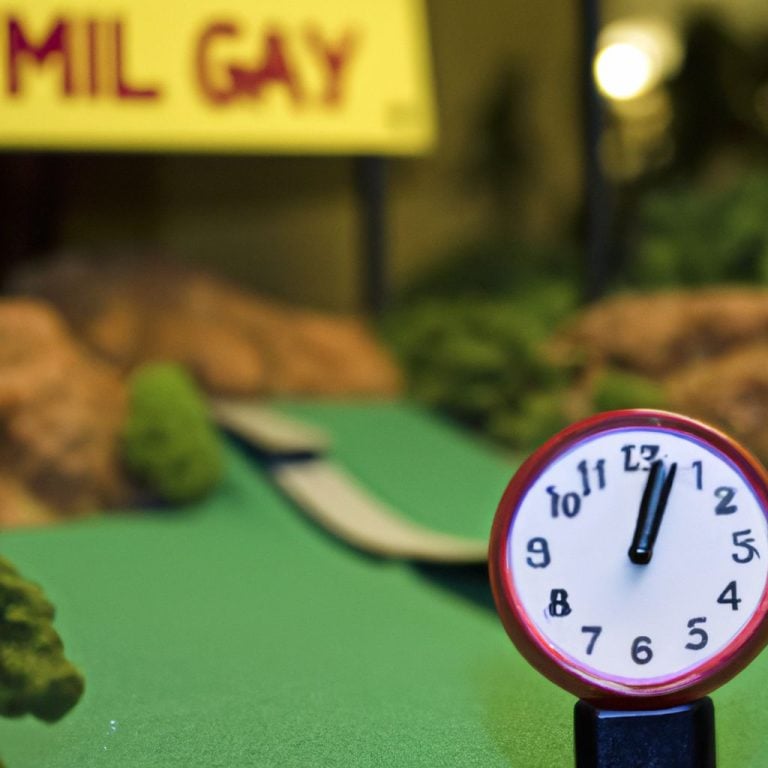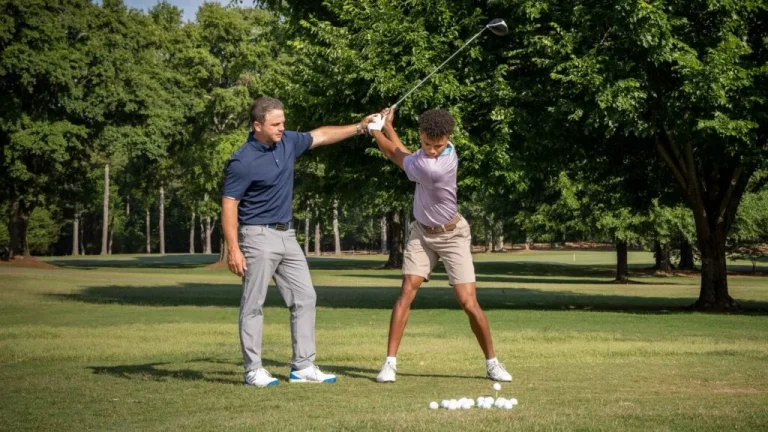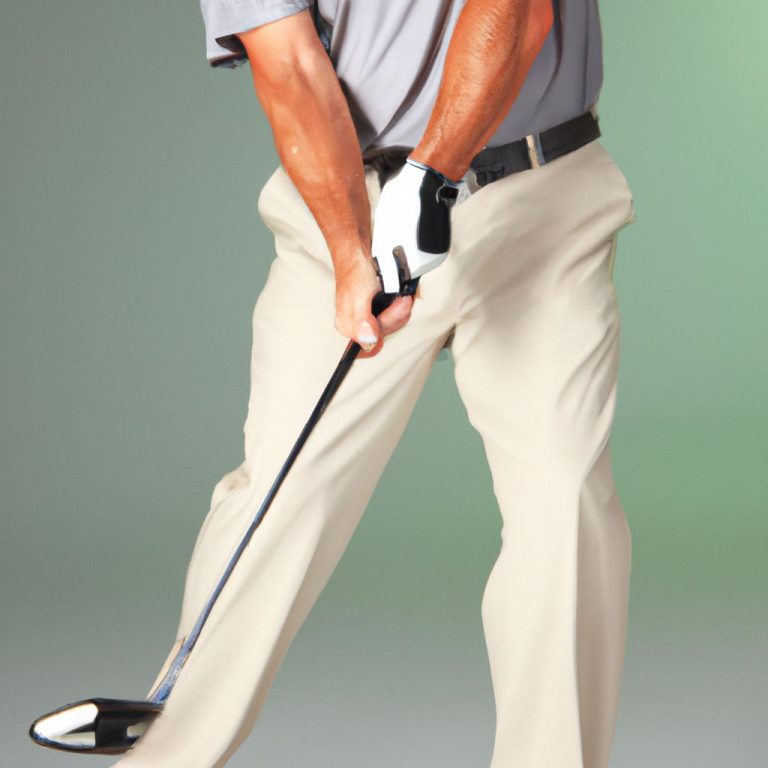how to use a golf driver
.jpg)
Using a golf driver effectively can greatly enhance your performance on the golf course. Whether you are a beginner or an experienced golfer looking to improve your skills, understanding how to properly use a golf driver is essential. This article will provide you with valuable insights and techniques to master the art of using a golf driver.
Introduction to Using a Golf Driver
To begin, let’s establish the basics of using a golf driver. This includes understanding what a golf driver is, its key components, and selecting the right driver for your game. A golf driver, also known as a 1-wood, is the club used to hit the longest shots off the tee.
Proper Grip and Stance
Having the correct grip and stance is crucial for maximizing your distance and accuracy with a golf driver. You will learn about the proper grip technique to optimize your control over the club and the ideal stance and alignment for hitting with a driver.
Swing Techniques for Using a Golf Driver
Mastering the swing techniques specific to using a golf driver is essential for achieving optimal results. We’ll break down the different phases of the swing, including the backswing, downswing, impact, and follow-through, providing tips and techniques to improve your performance.
Tips to Improve Your Golf Driver Shots
In this section, we’ll share valuable tips to enhance your golf driver shots. This includes focusing on tempo and rhythm, utilizing proper weight transfer during the swing, and practicing accuracy and distance control.
Common Mistakes to Avoid
Even with the proper techniques, golfers often make common mistakes that hinder their performance with a driver. We’ll highlight some of these common mistakes, such as gripping the club too tightly, swinging with poor posture, and overcompensating with excessive power.
Conclusion and Final Thoughts
In the conclusion, we’ll summarize the key points covered in this article and provide some final thoughts on mastering the use of a golf driver. By implementing the techniques and tips discussed, you can improve your performance and enjoy a more satisfying experience on the golf course.
Whether you are a novice golfer seeking to improve your skills or an experienced player looking to refine your technique, this article will provide you with valuable insights and guidance to enhance your performance with a golf driver.
Key takeaway:
- Using a golf driver maximizes distance: A properly chosen and used golf driver can help golfers achieve greater distances with their shots, allowing them to cover more ground on the course.
- Proper grip and stance are crucial: The correct grip and stance when using a golf driver significantly impact the accuracy and power of the shot. Paying attention to these fundamentals is essential for consistent performance.
- Practice and technique refinement lead to improvement: By focusing on swing techniques, such as the backswing, downswing, and impact, golfers can develop a consistent and effective driver shot. Regular practice and refinement of these techniques will lead to improvement in accuracy and distance control.
Understanding the Basics of a Golf Driver
Understanding the basics of a golf driver is crucial for any golfer looking to improve their game. The golf driver is a club specifically designed for longer shots off the tee, and having a good understanding of its features and techniques can greatly enhance your performance on the course.
Here are the key aspects to consider when it comes to understanding the basics of a golf driver:
- Clubhead: The clubhead is the part of the driver that comes into contact with the ball. It is typically the largest clubhead in a golfer’s bag and is designed to provide maximum distance. The size of the clubhead is regulated and cannot exceed 460 cubic centimeters.
- Shaft: The shaft is the long, slender part of the driver that connects the clubhead to the grip. It plays a crucial role in generating clubhead speed and distance. The length and flexibility of the shaft can significantly affect your swing and ball flight.
- Lie and Loft: The lie angle refers to the angle between the shaft and the ground when the club is at address. The loft angle, on the other hand, refers to the angle of the clubface that determines the trajectory and the initial launch angle of the ball. These two factors contribute to the driver’s performance and should be considered when selecting a driver.
- Center of Gravity (CG): The CG location in a driver influences the launch angle and spin rate. Lower CG promotes a higher launch and lower spin, which generally results in greater distance. Manufacturers often strategically position the CG to optimize performance.
- Adjustability: Many modern drivers come with adjustable features that allow golfers to fine-tune their shots to suit their swing. These adjustments can include loft, lie, and sometimes even weight distribution. Understanding how to properly adjust your driver can help you optimize your distance and accuracy.
- Ball Position: The position of the golf ball in relation to your stance and the driver face is critical. Placing the ball too far forward or too far back in your stance can affect your ability to make solid contact and control the trajectory of the ball. Experiment with different ball positions to find the one that works best for you.
By understanding the basics of a golf driver, you can make informed decisions when it comes to selecting the right club, adjusting its features, and optimizing your technique. Practice and experimentation will ultimately help you find the perfect driver setup that suits your game and maximizes your performance on the golf course.
What is a Golf Driver?
What is a Golf Driver?
A golf driver is a club specifically designed for long-distance shots off the tee. It is the longest and largest club in the golfer’s bag, typically featuring a large head and a long shaft. The primary purpose of a golf driver is to hit the golf ball with maximum distance and accuracy.
The head of a golf driver is typically made of metal, such as titanium or steel, and is designed to have a large “sweet spot” which allows for more forgiveness on off-center hits. The loft angle of a driver is typically between 8 and 12 degrees, which helps to launch the ball higher into the air for greater distance.
When choosing a golf driver, it is important to consider factors such as loft, shaft flex, and clubhead design. The loft angle should be selected based on the golfer’s swing speed and launch characteristics. A lower loft is ideal for golfers with faster swing speeds, while higher lofts are better for those with slower swing speeds.
Shaft flex is another crucial consideration when choosing a driver. The flex refers to how much the shaft bends during the swing. Golfers with slower swing speeds should opt for a more flexible shaft, while those with faster swing speeds benefit from a stiffer shaft.
The clubhead design can also impact performance. Different drivers have varying degrees of forgiveness, meaning they can mitigate the effects of off-center hits. Golfers who tend to miss the sweet spot frequently may benefit from a driver with a higher forgiveness rating.
Pro Tip: Experiment with different drivers to find the one that suits your swing and delivers the desired distance and accuracy. Working with a professional club fitter can help you find the perfect fit for your game.
Get to know the components of a golf driver so you can impress your friends with your extensive knowledge and still lose all your golf balls.
Components of a Golf Driver
When it comes to understanding the components of a golf driver, it’s important to familiarize yourself with the key elements that make up this essential golf club. Here is a comprehensive list of the main components found in a golf driver:
- Clubhead: This is the part of the golf driver that comes into contact with the ball. It is typically made of metal, such as titanium or stainless steel, and has a large and rounded shape to maximize forgiveness and distance.
- Face: The face of the clubhead is the part that strikes the ball. It is usually slightly angled or lofted to help lift the ball into the air.
- Hosel: The hosel is the connection point between the clubhead and the shaft. It is responsible for determining the loft and lie angle of the club.
- Shaft: The shaft is the long, tapered tube that connects the clubhead to the grip. It is typically made of graphite or steel and can vary in flexibility or stiffness depending on the golfer’s swing speed and preferences.
- Grip: The grip is the part of the club that the golfer holds onto. It is usually made of rubber or synthetic materials to provide a firm and comfortable grip.
- Adjustable Features: Some modern golf drivers come with adjustable features that allow golfers to customize the loft, lie angle, and weight distribution of the club to suit their swing and playing conditions.
Understanding the components of a golf driver is crucial in choosing the right club and optimizing your performance on the golf course. By familiarizing yourself with these key elements, you can make informed decisions when selecting a golf driver that suits your playing style and preferences.
Did you know? The average weight of a golf driver has significantly increased over the years. In the early 1900s, drivers weighed around 10-12 ounces, whereas modern drivers typically weigh between 290-310 grams, allowing for greater power and distance off the tee.
Choosing the Right Golf Driver
When it comes to choosing the right golf driver, there are several factors to consider. Here is a list of important considerations to help you make an informed decision:
- Clubhead size: The size of the clubhead can impact your game. A larger clubhead typically offers a larger sweet spot, making it more forgiving for off-center shots. However, smaller clubheads may provide better control.
- Material: Golf drivers are typically made of either titanium or composite materials. Titanium drivers are lightweight and offer more distance, while composite drivers provide better feel and control.
- Shaft flex: The flexibility of the club’s shaft can affect the trajectory and accuracy of your shots. Choose a shaft with a flex that matches your swing speed. A slower swing might benefit from a more flexible shaft, while a faster swing may require a stiffer shaft.
- Shaft length: The length of the shaft can also impact your swing. Longer shafts can provide more distance but may sacrifice control. Consider your height and swing style when selecting the appropriate shaft length.
- Loft angle: The loft angle refers to the angle between the clubface and the vertical plane. Higher loft angles can help lift the ball higher, making them suitable for players with slower swing speeds or those who struggle to get the ball airborne. Lower loft angles are better for players with faster swing speeds and those looking for more distance.
- Adjustability: Some drivers offer adjustable features that allow you to tweak the loft, face angle, and weight distribution. This can help you fine-tune your club to match your swing and desired ball flight.
Pro-tip: Consider getting custom fitted for your golf driver. A professional fitting can help determine the optimal club specifications for your unique swing and playing style. This can greatly enhance your performance on the course.
Get a grip and stand tall, it’s time to conquer the golf course with your driver!
Proper Grip and Stance
Mastering the proper grip and stance is crucial when it comes to maximizing your performance with a golf driver. In this section, we’ll dive into the secrets of achieving a correct grip for a golf driver, ensuring stability and control throughout your swing. We’ll also explore the intricacies of finding the right stance and alignment, unlocking the potential for powerful and accurate drives. Get ready to fine-tune your technique and elevate your golf game to new heights.
Correct Grip for a Golf Driver
The correct grip is crucial to achieving a proper swing and maximizing the potential of your golf driver. Follow these steps to ensure you have the correct grip for a golf driver:
- Start by holding the club in your left hand (or right hand if you’re left-handed) with the clubface square to the target.
- Place your hand on the grip with the pad of your palm resting on top of the grip.
- Wrap your fingers around the grip, with the pinky finger resting on top of the index finger.
- Ensure that your correct grip for a golf driver is neither too tight nor too loose. It should be firm enough to maintain control of the club but relaxed enough to allow for a fluid swing.
- Position your left thumb (or right thumb if you’re left-handed) slightly to the right of center on the grip. This helps promote a square clubface at impact.
- With your left hand in position, bring your right hand to the grip. Place your right hand below your left hand, making sure the palms are facing each other.
- Interlock your right pinky finger with your left index finger, or overlap the two fingers if that feels more comfortable.
- Again, ensure that your correct grip for a golf driver is firm but relaxed, with no excessive tension in the hands and wrists.
- Finally, make sure the V-shape formed by your thumbs and index fingers points toward your right shoulder (or left shoulder if you’re left-handed). This helps position your hands correctly on the grip.
Remember, a correct grip for a golf driver sets the foundation for a great swing, so practice and make adjustments as needed to find the grip that works best for you.
I once struggled with my drives, consistently hitting the ball off-target and losing distance. It wasn’t until my golf instructor emphasized the importance of the correct grip for a golf driver that I saw a significant improvement in my performance. With his guidance, I adjusted my grip, ensuring the club was properly aligned with my hands. The difference was remarkable. My drives became more accurate and powerful. The correct grip for a golf driver made all the difference in my golf game, boosting my confidence and enjoyment on the course.
Stance and Alignment for Hitting with a Golf Driver
When it comes to hitting with a golf driver, stance and alignment play a crucial role in your success. Proper positioning and alignment can significantly impact the accuracy and distance of your shots. Here are some key points to consider:
- Position your feet: Start by positioning yourself parallel to the target line, with your feet shoulder-width apart. The lead foot (left foot for right-handed golfers) should be slightly flared out towards the target.
- Align your body: Align your hips, shoulders, and feet parallel to the target line. This alignment will help ensure that your swing follows a straight path towards the target.
- Distribute your weight: As you address the ball, distribute your weight evenly on both feet. Avoid leaning too much towards the target or away from it. Maintaining balance is essential for a consistent swing.
- Grip the club: Place your hands on the club with a light but firm grip. The V formed by your thumb and index finger should point towards your trailing shoulder (right shoulder for right-handed golfers). This grip allows for proper wrist hinge and club control during the swing.
- Set up ball position: Position the ball slightly forward in your stance, closer to your lead foot. This forward position will help optimize launch conditions and promote a higher launch angle for the driver.
- Maintain good posture: Stand tall with a slight bend in your knees. Keep your back straight, and avoid slouching or rounding your shoulders. Good posture promotes a more efficient swing and helps generate power.
By following these principles of stance and alignment, you can optimize your setup for hitting with a golf driver. Remember to practice and experiment to find the stance and alignment that feels most comfortable and effective for your swing style.
The concept of proper stance and alignment in golf dates back centuries. It was first formalized by prominent golf instructor and player John Jacobs in the 1970s. Jacobs emphasized the importance of aligning the body parallel to the target line and positioning the feet in a specific manner. Since then, these principles have become fundamental in golf instruction and have helped countless golfers improve their game.
Swing your driver like a pro and send those balls flying, because who needs a therapist when you have a long drive?
Swing Techniques for Using a Golf Driver
Mastering the art of using a golf driver requires honing your swing techniques. Join me on this journey as we explore the key components of a powerful and accurate drive. From the smooth and controlled backswing to the forceful downswing, all the way to the impactful moment of impact, and the graceful follow-through, we’ll uncover the secrets to unlocking your full potential on the golf course. So grab your driver and let’s dive into the world of swing techniques for using a golf driver!
Backswing
When it comes to using a golf driver, the backswing is a crucial component of the swing that sets the stage for a powerful and accurate shot. Here are some key points to consider:
- Proper grip and posture: Ensure that you have a secure and comfortable grip on the club, with your hands placed in the right position. Your stance should be balanced and allow for a fluid movement during the backswing.
- Rotation of the body: During the backswing, focus on rotating your upper body while maintaining a stable lower body. This rotation helps generate power and sets up the club for a proper downswing and impact.
- Take the club back low and wide: Start your backswing by smoothly taking the club back low and wide, away from the target. This wide arc helps create more potential energy that can be transferred to the ball upon impact.
- Keep your wrists firm: As you reach the top of your backswing, it’s important to maintain firm wrists and avoid any unnecessary movement. This allows for a more controlled and consistent swing path.
- Weight shift and balance: During the backswing, transfer your weight from your front foot to your back foot. This weight shift creates a loaded position, ready to unleash power during the downswing.
- Maintain a steady tempo: It’s essential to maintain a smooth and consistent tempo throughout your entire swing, including the backswing. This helps with timing and control, leading to more accurate shots.
- Visualize your target: As you perform your backswing, visualize your intended target. This mental focus helps align your body and club, leading to a more accurate shot.
Remember, practicing your backswing is key to developing a consistent and effective golf swing. Take the time to refine your technique and seek feedback from a golf professional to improve your performance on the course.
Downswing
The downswing is a crucial part of using a golf driver effectively. It is the movement that directly follows the backswing and sets the stage for impact and the follow-through. Here are some key points to consider when working on your downswing:
- Transition smoothly: As you transition from the backswing to the downswing, focus on maintaining a smooth and balanced motion. Avoid any sudden jerking or rushing movements, as they can negatively impact your accuracy and power.
- Initiate with the lower body: A powerful downswing starts with the lower body. Use your hips and legs to initiate the movement, shifting your weight from the back foot to the front foot. This transfer of weight adds speed and power to your swing.
- Keep your arms connected: Throughout the downswing, strive to keep your arms connected to your body. This connection helps with consistency and control, preventing any excessive casting or early release of the club.
- Generate speed with the wrists: As you approach impact, focus on unleashing the power stored in your wrists. Allow them to naturally release and snap through the ball, generating clubhead speed and maximizing distance.
- Maintain a balanced finish: After striking the ball, ensure that you maintain a balanced finish position. Your weight should be fully transferred to your front foot, and your body should be facing the target. This balanced finish indicates a solid and well-executed downswing.
Remember, practice and repetition are essential for refining your downswing technique. By focusing on these key points and dedicating time to improving your mechanics, you can enhance the effectiveness and consistency of your golf driver shots.
Your golf swing’s impact and follow-through should be smoother than a baby’s bottom, but with more power behind it.
Impact and Follow-through
Impact and follow-through are essential elements when effectively using a golf driver. By incorporating proper technique in these areas, you can enhance the distance and accuracy of your shots. Here are some key points to consider:
- Position your body correctly: To start, align your body and feet parallel to the target line. This ensures a proper swing path and enables a more powerful impact.
- Maintain a balanced stance: Distribute your weight evenly between your feet, with a slightly greater emphasis on the right foot for right-handed golfers (and vice versa for left-handed golfers). This technique helps generate power and maintain stability throughout the swing.
- Focus on the impact zone: As you initiate your downswing, shift your focus to the point of impact with the ball. Keep your eyes fixed on the ball and strive for solid contact with the clubface. This optimizes the transfer of energy from the club to the ball.
- Follow through with your swing: After making contact with the ball, smoothly continue your swing and fully extend your arms. This complete follow-through allows for maximum power and control.
- Maintain body rotation: During the follow-through, ensure that your body rotates fully towards the target. This rotation generates additional power and promotes a straighter ball flight.
By focusing on these aspects of impact and follow-through, you can enhance your golf driver shots and achieve improved results on the course. Remember to consistently practice these techniques to develop muscle memory and enhance your overall golf game.
Tips to Improve Your Golf Driver Shots
Looking to up your golf driver game? Get ready to enhance your shots with these game-changing tips! We’ll dive into the importance of tempo and rhythm, discover the benefits of proper weight transfer, and uncover the secrets to mastering accuracy and distance control. So, grab your golf clubs and let’s tee off towards improvement on the fairway!
Focus on Tempo and Rhythm
When it comes to improving your golf driver shots, focusing on tempo and rhythm is absolutely essential. By maintaining the right tempo and rhythm throughout your swing, you can achieve shots that are consistently accurate. Take note of the following factors:
- Strive for a smooth and controlled swing. The key is maintaining a consistent pace from the backswing to the downswing and follow-through. This will help establish a good rhythm and prevent any rushed or jerky movements.
- Pay attention to your timing. A well-timed swing will generate maximum power and distance. Practice your swing to develop a sense of timing and synchronize your body movements with the club’s motion.
- Consider using a metronome or counting in your head. Employing a metronome or a mental count can assist in establishing a consistent tempo for your swing. Experiment with different tempos to find the one that feels most comfortable and effective for you.
- Focus on the transition between the backswing and the downswing. This transition is a crucial moment where the change in direction occurs. Transitioning smoothly without any abrupt changes in speed or rhythm is vital.
- Maintain a balanced and relaxed posture. A balanced and relaxed posture allows for an easier and more fluid execution of your swing. Avoid tensing up or overexerting yourself, as it can disrupt your tempo and rhythm.
- Incorporate rhythm-based drills and practice with a metronome. Including rhythm-based drills in your practice routine can help develop a better sense of tempo and rhythm. You could swing to a specific beat or engage in tempo-related exercises.
- Stay focused and committed to your swing. Mental focus and commitment play a vital role in maintaining a consistent tempo and rhythm. Clear your mind, visualize your shot, and trust in your swing.
Pro-tip: Recording your swing and reviewing it can provide valuable feedback on your tempo and rhythm. Analyze your video to identify any areas where you may need to adjust or improve your timing.
Get your weight in the right place, so your ball doesn’t end up in the wrong place.
Utilize Proper Weight Transfer
Utilizing proper weight transfer is crucial for optimizing your golf driver shots. Here are the steps to effectively transfer weight during your swing:
- Start with a balanced stance, utilizing proper weight transfer, with your feet shoulder-width apart and your weight evenly distributed.
- As you begin your backswing, utilize proper weight transfer by shifting your weight onto your back foot. This will help you load up power for your swing.
- Utilize proper weight transfer as you reach the top of your backswing, by smoothly transferring your weight onto your front foot to initiate the downswing.
- At the point of impact, make sure to utilize proper weight transfer so that most of your weight is on your front foot. This allows you to drive through the ball with maximum power.
- After impact, continue to utilize proper weight transfer by shifting your weight onto your front foot as you follow through with the swing. This helps maintain balance and control.
Utilizing proper weight transfer contributes to a more powerful and accurate golf driver shot. By effectively utilizing weight transfer, you can generate more clubhead speed and achieve better ball contact. This will improve both the distance and control of your shots.
Remember, weight transfer should be fluid and rhythmic throughout your swing. Avoid any sudden or jerky movements that can disrupt your balance and accuracy.
Practice incorporating proper weight transfer into your training sessions. Focus on utilizing proper weight transfer to smoothly shift your weight from your back foot to your front foot, while maintaining balance and stability. Gradually increase the speed and power of your swing while consistently utilizing proper weight transfer.
Utilizing proper weight transfer is a fundamental technique that can significantly enhance your golf driver shots. Practice and repetition will help you cultivate proficiency in this crucial aspect of your swing. Incorporate this technique into your regular training routine and watch your drives soar with distance and precision.
Practice Accuracy and Distance Control
Practicing accuracy and distance control is essential for improving your golf driver shots. Here are some effective steps to help you:
- Focus on alignment: Practice accuracy and distance control by setting up your stance so that your feet, hips, and shoulders are parallel to the target line. This will ensure that you are aligned properly and give you a better chance of hitting the ball straight.
- Choose a target: Before each shot, pick a specific target that you want to aim for. This will give you a clear focus and help you visualize the shot, ultimately aiding in accuracy and distance control.
- Control your grip: Maintain a relaxed but firm grip on the club. Avoid gripping too tightly as it can inhibit your swing and reduce accuracy, affecting distance control as well.
- Take a smooth backswing: Practice accuracy and distance control by starting your swing with a controlled and smooth backswing. Avoid rushing or jerking the club back, as it can lead to erratic shots and compromise accuracy and distance.
- Transition and downswing: Transition smoothly from your backswing to your downswing, keeping your body and arms in sync. Generate power from your hips and core while maintaining control for improved accuracy and distance.
- Strike the ball: Focus on hitting the ball in the center of the clubface to maximize distance and accuracy. A solid strike will help reduce the chances of slicing or hooking the ball, ensuring better accuracy and distance control.
- Follow-through: Complete your swing with a balanced and full follow-through. This will help transfer energy to the ball and maintain control throughout the shot, further enhancing accuracy and distance control.
- Practice consistently: Regular practice is crucial for improving accuracy and distance control. Dedicate time to consistently practice accuracy and distance control, working on your swing mechanics and fine-tuning your skills.
- Experiment with different clubs: Try different drivers to find the one that suits your swing and produces the desired results. By experimenting with different clubs, you can find the right one that improves accuracy and distance control.
By following these steps and consistently practicing accuracy and distance control, you can enhance your golf driver shots and become a more proficient player on the course.
Interesting The concept of accuracy and distance control in golf dates back to the early development of the sport in the 15th century. As the game evolved, players recognized the importance of hitting the ball accurately towards a defined target and controlling the distance it traveled. Strategies and techniques were refined over the years, with players experimenting with different clubs, grips, and swings to achieve optimal results. Today, accuracy and distance control remain fundamental aspects of the game, with players constantly striving to practice accuracy and distance control, thereby improving their skills and achieving consistent performance on the course.
Don’t let your grip be as tight as your ex’s hold on a grudge – 6.1 Gripping Too Tightly.
Common Mistakes to Avoid
When it comes to using a golf driver, there are some common mistakes that can hinder your game and prevent you from achieving optimal results. In this section, we will uncover these mistakes and provide insights on how to avoid them. From gripping too tightly to swinging with poor posture, and overcompensating with power, we’ll delve into each sub-section to help you identify and correct these errors. Get ready to fine-tune your skills and take your golf game to the next level!
Gripping Too Tightly
Gripping the golf driver too tightly is a common mistake that many golfers make. When you hold the club with excessive grip pressure, it can negatively impact your swing and overall performance. Here are some key points to consider when discussing the issue of gripping too tightly:
- Gripping too tightly restricts proper club movement:
- Increased tension in the hands and arms:
- Lack of distance and control:
- Importance of a relaxed grip:
When you tightly grip the golf driver, it prevents the club from swinging freely. This can lead to a restricted backswing and a lack of clubhead speed, resulting in shorter and less accurate shots.
When you grip the club tightly, it creates tension in your hands and arms, which can lead to poor shot execution. It diminishes your ability to feel the clubhead and can cause an inconsistent release of the club.
Gripping the club too tightly limits the ability to generate power and can result in a loss of distance. Additionally, it makes it challenging to maintain accuracy and control over the clubface, leading to wayward shots.
Maintaining a relaxed grip is crucial for a smooth and fluid swing. It allows for better clubhead speed and a more natural release of the club. Having a light grip pressure also promotes better feel and control over the clubhead throughout the swing.
To avoid gripping the golf driver too tightly, focus on maintaining a light grip pressure throughout your swing. Imagine holding the club with about 3 out of 10 pressure, with 10 being the tightest grip. Practice loosening your grip during practice swings and shots to cultivate a relaxed grip feel. This will help promote a more fluid and effortless swing.
Pro Tip: To ensure a light grip pressure, try holding the club with your fingers rather than squeezing it with your palm. This will help you maintain a more relaxed grip and improve your overall performance with the golf driver.
Swinging with poor posture may not score you points on the course, but it’s a great way to impress chiropractors with your dedication to their business.
Swinging with Poor Posture
When it comes to using a golf driver, having proper posture is crucial for achieving accurate and powerful shots. Swinging with poor posture can negatively impact your swing mechanics, resulting in inconsistent shots and potential risk of injury.
Here are some important points to consider regarding swinging with poor posture:
- Alignment: Maintaining proper alignment is essential for a good golf swing. When swinging with poor posture, your alignment can be affected, leading to mis-hits and slices. Ensure that your shoulders, hips, and feet are properly aligned with your target.
- Back Angle: Keeping a slight tilt in your spine towards the ball is important for a proper swing. Swinging with poor posture can cause you to stand too upright or hunch over, impacting your swing plane and making it difficult to make solid contact with the ball.
- Bending from the Waist: Rather than rounding your back or slumping your shoulders during the swing, it is important to bend from the waist. Incorrect posture can restrict rotation and hinder generating maximum power and accuracy.
- Weight Distribution: Poor posture can also affect weight distribution throughout the swing. If you have a hunched back or lean excessively forward, it can shift your weight too much towards your toes, making it difficult to maintain balance and control.
- Impact on Swing Plane: Swinging with poor posture can cause your swing plane to be too upright or too flat, resulting in inconsistent ball flight and reduced distance. Maintaining a neutral spine position is essential for a consistent and efficient swing path.
Improving your posture will greatly benefit your golf swing. Here are a few suggestions to help you swing with better posture:
- Stand tall with your shoulders back and chest slightly lifted, maintaining a neutral spine position.
- Engage core muscles to support your posture throughout the swing.
- Perform regular exercises and stretches to improve flexibility and strengthen the muscles involved in your golf swing.
- Seek guidance from a golf instructor or coach who can analyze your posture and provide specific exercises or adjustments tailored to your needs.
- Practice in front of a mirror to check your posture during your swing.
By correcting your posture and maintaining good alignment, you will be able to improve your swing mechanics and achieve more consistent and powerful shots.
Overcompensating with Power
When using a golf driver, it is important to avoid overcompensating with power. Overcompensating with power can lead to several common mistakes that can negatively affect your swing and overall performance. Here are some key points to consider when it comes to overcompensating with power:
1. Strive for a smooth and controlled swing. Instead of swinging with excessive force, focus on maintaining a consistent tempo and rhythm throughout your swing. This will help you maintain balance and control over the club.
2. Proper weight transfer is crucial. Instead of relying solely on arm strength and power, make sure to shift your weight from your back foot to your front foot during the downswing. This transfer of weight helps generate power without the need for excessive force.
3. Practice accuracy and distance control. Instead of solely focusing on hitting the ball as hard as possible, work on improving your accuracy and distance control. This can be achieved through proper technique and timing rather than relying solely on power.
4. Avoid gripping the club too tightly. Overcompensating with power often leads to gripping the club too tightly, which limits your flexibility and hinders a smooth swing. Maintain a relaxed grip to allow for a more fluid and natural swing.
5. Maintain a proper posture throughout your swing. Overcompensating with power can cause golfers to adopt poor posture, leading to inconsistent swings and potential injuries. Keep your back straight, shoulders relaxed, and knees slightly flexed for optimal posture and stability.
Overcompensating with power may seem like a tempting approach, but it often leads to diminished control and accuracy. By focusing on technique, balance, and maintaining a smooth swing, you can achieve greater consistency and overall performance on the golf course. Remember that power should be generated through proper technique and weight transfer rather than forced through excessive force.
Some Facts About How To Use a Golf Driver:
- ✅ Proper positioning and balance are crucial when using a golf driver. (Source: Golf Digest)
- ✅ Swing speed is more important than power when it comes to using a golf driver. (Source: WikiHow)
- ✅ The angle of attack and loft adjustments can impact the distance and trajectory of a golf driver shot. (Source: The Left Rough)
- ✅ To avoid slicing, keep your back facing the target longer during the downswing when using a golf driver. (Source: Butch Harmon)
- ✅ Maintaining a consistent tempo and arm speed throughout the swing is important for effective use of a golf driver. (Source: Golf Digest)
Frequently Asked Questions
How do I use a golf driver differently from my irons?
When using a golf driver, it is important to note that it is the longest club in your bag and requires adjustments in swing and setup. The ball is teed up when hitting a driver, which changes the impact position. Additionally, the driver has a different length and loft compared to other clubs, so the swing and technique need to be adjusted accordingly.
What is the correct way to grip a golf driver?
The correct grip for a golf driver is similar to holding a baseball bat. Place your dominant hand in front, closer to the clubface, and grip the club about 10-12 inches away from your body. This grip allows for better control and flexibility during the swing.
How can I add more distance to my drives?
To add more distance to your drives, there are several tips you can follow. Some of these include widening your stance, maintaining full rotation in your swing, properly rotating your hips, ensuring full arm extension, creating speed at the bottom of your swing, hitting up on the ball, choosing the right shaft, and using workout routines to increase driving distance.
What is the headcover drill for hitting a driver?
The headcover drill is a useful exercise to avoid coming over the top during your driver swing. Simply place a headcover under your left armpit (for right-handed players) and focus on keeping it in place throughout your swing. This drill encourages a more inside-out swing path, promoting straighter drives.
How do I select a target when using a golf driver?
When using a golf driver, it is important to select a specific target on the course rather than just looking down the fairway. This helps improve focus and accuracy. Choose a spot in the distance that you want to hit the ball towards, and align your body lines (shoulders, hips, knees, feet) parallel to the target line.
Why is swing speed important when using a golf driver?
Swing speed is crucial when using a golf driver because it directly impacts the distance you can achieve. A great-looking swing without enough speed may not generate the desired distance. Therefore, beginners should focus on increasing swing speed first and then adjust their body position accordingly to optimize their driving performance.






